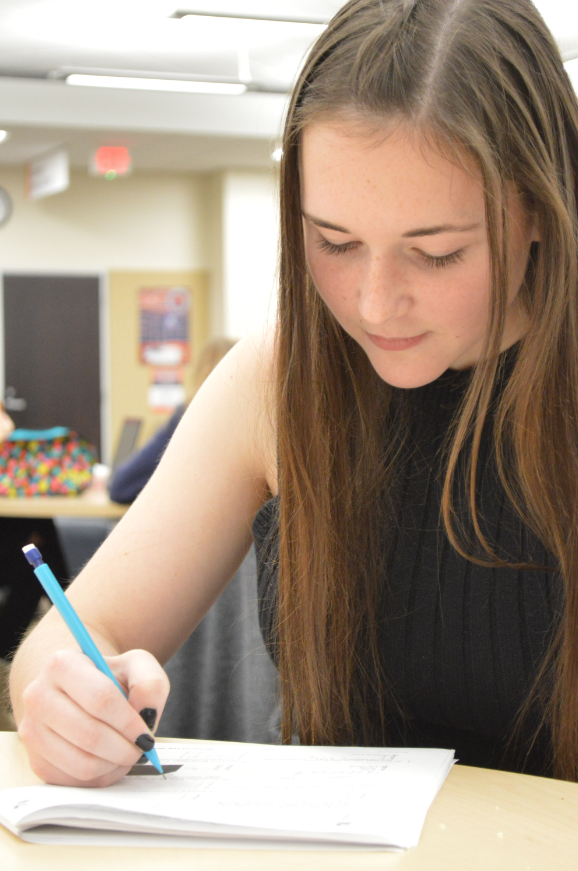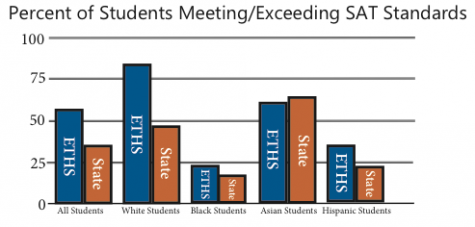Evanston SAT scores above state averages
November 21, 2017
While recent results show about two-thirds of Illinois public high schools posting below-average scores on the SAT exam, Evanston proves itself an outlier to this trend.
The SAT data was released on Oct. 31 through the Illinois Report Card. For the exam, students can earn up to a total composite score of 1600. For this past year’s exams, the statewide average was a composite of 1015.9. Evanston students performed just above the state average, averaging a composite score of 1118.5.
“There is a national College Readiness Benchmark that is established by the College Board,” Assistant Superintendent for Curriculum & Instruction Pete Bavis explained. “Illinois set a completely different standard for SAT scoring which includes a higher average for students to be considered college ready.”
The state classifies SAT performance based on four different categories: Partially Meeting, Approaching, Meets and Exceeds. Overall, 57 percent of eleventh graders at ETHS met/exceeded standards, whereas only 38 percent of eleventh graders reached this level statewide.
Last year was the first year Illinois public schools were required to have juniors take the SAT. Bavis explained that because of this, last spring’s tests results are considered to be “baseline” data and cannot be compared to scores from previous years when the state-mandated test was the ACT.
According to the Chicago Tribune, the SAT results reflected wide disparities in performance among 700 public high schools statewide. ETHS ranked 44th in the state based on SAT average. Neighboring schools such as New Trier, Glenbrook North and Deerfield are among the top-scoring in the state and all posted above 1200.
“It is hard to compare Evanston’s scores to those of New Trier or Main South, because demographically the schools are really different,” Bavis explained.
One factor that contributes to Evanston’s variance in scores is the socioeconomic disparaities among students. There are those who can afford extensive tutoring, and those who enter the test cold, having no encounters with it whatsoever.
“Having access to a tutor helped me focus on areas of the test I was struggling with as well as learn tricks to use during test-taking,” junior Jack Suvari said.
While it was required for all juniors to take the SAT last spring, many still focused their test preparation on the ACT, which almost all students took in previous years.
“Essentially, you find that if a student does well on the ACT, they will do well on the SAT,” Bavis said.
Bavis explained that SAT data has never been reported like this before. Public schools across the state are expected to find out more about trends when more data is available.










